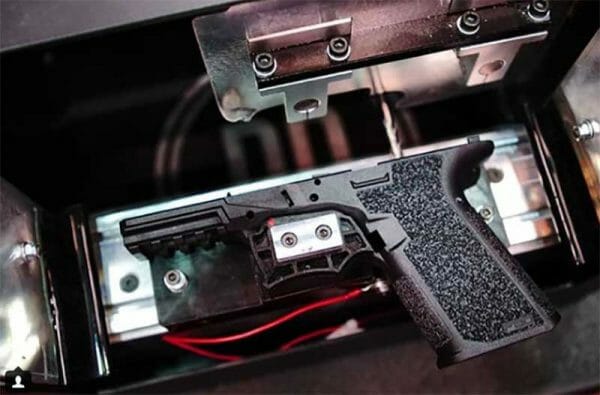
The U.S. Supreme Court on Monday granted certiorari in the case of Garland v. VanDerStok, which challenges the Bureau of Alcohol, Tobacco, Firearms and Explosives’ “Final Rule” which considers frames and receivers to be firearms.
ATF announced the “Finale Rule” in April 2022. The reaction from gun owners was strictly negative, and it has been a court battle ever since.
As noted in a complaint filed in the case by the Second Amendment Foundation and Defense Distributed in December 2022, “The new Final Rule contradicts the statute it is supposed to be administering. Congress in the Gun Control Act defined ‘firearm’ to include a weapon’s actually finished ‘frame or receiver.’ Yet the new Final Rule expands the definition to criminalize (1) unfinished frames and receivers—i.e., non-frame and non-receiver articles that may become a frame or receiver if additional processes sufficiently alter their material constitution, and (2) frame and receiver ‘part kits’—i.e., kits of non-frame and non-receiver articles that may become a frame or receiver if additional processes sufficiently alter its material constitution. Both expansions contradict the Gun Control Act’s ‘firearm’ definition, which plainly understands that an unfinished frame or receiver is not an actual frame or receiver and that a part kit to make a frame or receiver is also not an actual frame or receiver. Such obvious statutory overreaches violate the Administrative Procedure Act (APA).”
The SAF-Defense Distributed complaint also asserted at the time that the “Final Rule” also violates the Administrative Procedure Act “by failing to perform the inquiries mandated by New York State Rifle & Pistol Ass’n, v. Bruen.”
“To comply with the Second Amendment,” the complaint alleged at the time, “the promulgating agencies needed to jettison balancing tests and consider only whether their regulation is ‘consistent with this Nation’s historical tradition of firearm regulation.’ Yet because that did not happen—itself a key APA violation—it is no surprise that the new Final Rule tramples true historical traditions.”
An Aug. 8, 2023, the Supreme Court granted a stay in the ruling, requested by the Biden administration, allowing the rule to remain in effect while the case moves through the U.S. 5th Circuit Court of Appeals.
As explained by SAF at the time, the high court stay remains in effect through the final disposition of the appeal, including a petition for certiorari, Now that certiorari is granted, the stay remains in effect pending the Supreme Court’s ruling.
Sixteen days later, SAF filed an appellee’s brief which noted, “Congress gave ‘firearm’ its keystone definition in the Gun Control Act of 1968. The statute defines ‘firearm’ to mean ‘(A) any weapon (including a starter gun) which will or is designed to or may readily be converted to expel a projectile by the action of an explosive; (B) the frame or receiver of any such weapon; (C) any firearm muffler or firearm silencer; or (D) any destructive device. Such term does not include an antique firearm.’ Congress never opted to define the ‘firearm’ term’s constituent phrase ‘frame or receiver.’”
The case underscores what many consider to be the Biden administration’s “weaponization” of the ATF under Director Steve Dettelbach, to the point the agency has taken an action that violates its authority and usurps the power of Congress.
The new “Final Rule” essentially saw the ATF take a 180-degree turn on defining firearms parts kits and unfinished frames and receivers, reversing decades of policy and, more fundamentally, taking a nasty administrative swipe at an American tradition of home firearms gunsmithing dating back to before the American Revolution.
That the high court has now granted certiorari in this case could spell more trouble for the agency and the gun prohibition movement, which has been unrelenting under the Biden-Harris administration. Biden came into office with a restrictive gun control agenda, and it is only because he had an uncooperative Congress that he was unable to push more of it into law.
Some observers look at this policy change to represent Biden’s effort to literally ban private gun making, which is not what Congress intended with GCA ’68.
The president has described himself as a “Second Amendment guy” because he owns a shotgun. This appears to be no more accurate than his oft-refuted claim that nobody was able to own cannons when the Second Amendment was included in the Bill of Rights.
About Dave Workman
Dave Workman is a senior editor at TheGunMag.com and Liberty Park Press, author of multiple books on the Right to Keep & Bear Arms, and formerly an NRA-certified firearms instructor.







